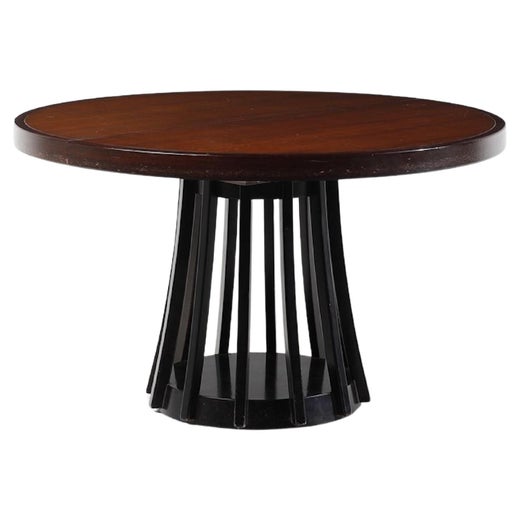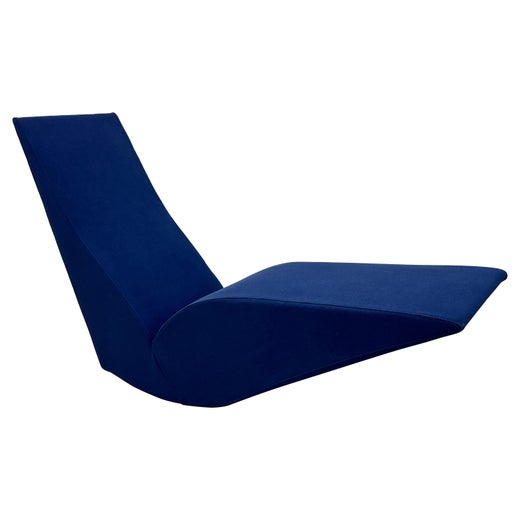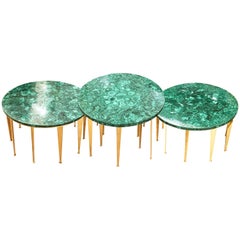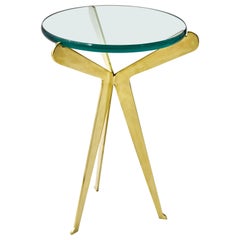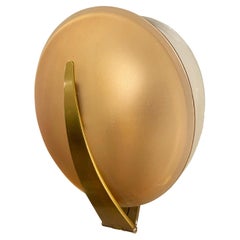Sleek Mangiarotti Asolo Table
About the Item
- Creator:Cappellini (Maker),Angelo Mangiarotti (Designer)
- Dimensions:Height: 29.75 in (75.57 cm)Width: 78.5 in (199.39 cm)Depth: 39.25 in (99.7 cm)
- Style:Mid-Century Modern (Of the Period)
- Place of Origin:
- Period:
- Date of Manufacture:90's
- Condition:Wear consistent with age and use. two minor repairs.
- Seller Location:New York, NY
- Reference Number:1stDibs: LU8138817842
Angelo Mangiarotti
Italian architect, designer, teacher and urban planner Angelo Mangiarotti was a leading light in the international design community from the 1960s onward. While he was an adherent of the rationalist principles of purity of line and simplicity of construction, he sought to imbue his designs for coffee tables, dining chairs, sconces and other furnishings with a sense of character and lightness of spirit that was often lacking in late-20th-century modernist architecture and design.
Born in Milan, Mangiarotti studied architecture at Milan Polytechnic, graduating in 1948. Five years later, he won a visiting professorship at the Illinois Institute of Technology — beginning a peripatetic academic career that would see him teaching in numerous Italian institutions as well as in schools as far afield as Hawaii and Australia. He worked with Bauhaus eminences Ludwig Mies van der Rohe and met such greats as Frank Lloyd Wright and Walter Gropius. He returned to Italy in 1955 and would go on to work on numerous industrial, residential, commercial and civic projects in his home country, most notably a group of six railway stations in Milan.
As a designer, Mangiarotti and the development of his career embodies the evolution of modernism in the latter decades of the 20th century. In the late 1950s and early ’60s, after early experiments in plywood furniture and one-piece foam-core seating — including the 1110 lounge chair for Cassina — Mangiarotti began to design using more classic materials, from delicate, curvaceous blown-glass table lamps for Artemide to chandeliers with crystal links for Vistosi.
In 1971, Mangiarotti introduced what became his signature designs: a series of tables in marble and other stones that featured “gravity joints,” their legs held in place by the weight of the tabletop. Tables in his Eros collection have muscular proportions that anticipate the robust, overscaled lines of postmodern works that would appear 10 years later: His Eccentrico table, for example, is a striking assemblage in marble featuring a top that is cantilevered dramatically on a canted columnar base.
But simplicity and practicality were consistently the primary watchwords of Mangiarotti’s designs. The purity and elegance of the objects he created offer a graceful counterpoint to a traditional decor, yet they have a singular sculptural presence that allows them to stand out powerfully in a modern interior.
Find vintage Angelo Mangiarotti furniture on 1stDibs.
Cappellini
In 1946, at the start of a postwar boom in Europe, Enrico Cappellini opened the doors to a small furniture studio in the Italian town of Carugo. But it wasn’t until his son joined the company nearly three decades later that Cappellini became a powerhouse fixture on the global design stage. Today Cappellini is one of the world’s foremost manufacturers of innovative chairs, tables and decorative objects.
Giulio Cappellini joined the family company in 1977 and, with his appointment, ushered in a stage of boundary-pushing modernism and prolific creativity at Cappellini. With a dual background in architecture and business management, Giulio was well equipped to steer the brand into both innovative design and economic growth in a rapidly globalizing economy.
The second-generation leader’s first major success came in 1981, with the launch of Sistemi, a modular, hyperfunctional storage system that would come to symbolize the chic functionality of Cappellini. That was quickly followed by a collaboration with renowned Japanese designer Shiro Kuramata for the Progetti Compiuti collection, a line that brought unexpected playfulness to the simple framework of a black-and-white cabinet and remains an iconic collectible today.
That first collaboration opened the doors to a prolific output of partnerships, with Cappellini tapping such star designers as Jasper Morrison, Marcel Wanders, Tom Dixon, Ronan and Erwan Bouroullec and Nendo for collections over the ensuing decades that spanned a range of materials and styles. Speaking to this range, Marc Newson’s plumply curvaceous 1988 Embryo chair, Jasper Morrison’s slightly arachnoid 1987 Thinking Man’s chair and Tom Dixon’s sculptural 1991 S-chair — each quite stylistically unique — remain some of the company’s most recognizable pieces, with the latter in the permanent collection of the Museum of Modern Art.
Cappellini, now headquartered in Milan, continues to partner with guest designers across furniture, storage and lighting solutions, though many of its 1970s and ’80s designs remain its most coveted today.
Find vintage Cappellini furniture on 1stDibs.
You May Also Like
Vintage 1980s Italian Coffee and Cocktail Tables
Granite
Vintage 1970s Italian Dining Room Tables
Marble
Vintage 1970s Italian Dining Room Tables
Carrara Marble
2010s Italian Mid-Century Modern Dining Room Tables
Carrara Marble
2010s Danish Mid-Century Modern Dining Room Tables
Carrara Marble
Vintage 1970s Italian Mid-Century Modern Dining Room Tables
Marble, Brass
Vintage 1970s Italian International Style Dining Room Tables
Travertine
2010s Danish Mid-Century Modern Dining Room Tables
Steel
2010s Danish Mid-Century Modern Dining Room Tables
Steel
2010s Danish Mid-Century Modern Dining Room Tables
Steel
More From This Seller
View AllVintage 1960s Italian Mid-Century Modern Dining Room Tables
Brass
2010s Italian Modern Coffee and Cocktail Tables
Malachite, Brass
2010s Italian Mid-Century Modern Side Tables
Brass
Vintage 1960s Italian Mid-Century Modern Wall Lights and Sconces
Glass
2010s Italian Modern Side Tables
Lapis Lazuli, Brass
2010s Italian Modern Coffee and Cocktail Tables
Brass
